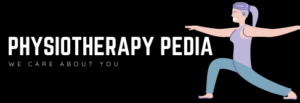Table of Contents
Airway Clearance Techniques
The techniques in which manual or mechanical procedures are used to facilitate mobilization of secretions present in airways of lungs, which help to prevent infection and improve function of lungs. These techniques are commonly known as chest clearance, Breathing techniques, or Physiotherapy chest exercises. In this case, a patient needs a physiotherapist to show these techniques. There are some articles that show: clearing the chest everyday should become as normal as brushing teeth in daily life routine.

Reference: https://za.pinterest.com/pin/629096641672211846/
Benefits
- Eliminate excess mucus from lungs and prevent airways becoming blocked.
- Reduce chest infection
- Reduce mucus production which clear chest easier and less tiring
- Improve respiratory function or treat breathing problems due to swelling and too much mucus in lungs.
It is important to stay hydrated before using the technique, or to get rid of mucus easily. Stay well hydrated is the best way to keep airways moist, or patient can also try steam inhalations to moist airways

Indications of Chest Physiotherapy
Respiratory diseases
- Bronchiectasis
- COPD
- Pneumonia
- Cystic fibrosis
Neuromuscular diseases
- muscular dystrophy
- cerebral palsy
- spinal cord injury
Techniques
These techniques include:
- Coughing and Huffing
- Postural drainage
- Percussion
- Vibration
- Cough techniques
- Airways suctioning

Coughing
It is the easiest procedure to clear airways, which help to release the mucus secretions in a healthy and natural way. Basically coughing helps in secreting the mucus from large airways but for the small airways coughing should be done with other airways clearance techniques (ACTs).
Huff Coughing
Also known as Huffing, which also helps to remove mucus secretions. In this procedure, a patient breathes, holds and then exhales actively. Huffing is not really as forceful as a cough. It allows air to get behind the mucus and then separates it from the lung wall so it can be coughed out.
Postural drainage
The technique uses gravity and other airway clearance techniques (i.e. percussion or vibration) to help move mucus. It is basically the assumption of position of the body which allows gravity to assess secretions from the lung. The appropriate position is decided through auscultation. Positions for patients also depend on pain or any respiratory difficulties caused by a change in position.
During postural drainage, “the segmental bronchus to be drained is ordered perpendicular to the floor”.
Percussion
The technique of percussion focused at loosening of retained secretions which can be performed manually or through mechanical devices. In case of manual percussion, apply rhythmic clapping through cupped hands with fingers and thumb adducted on the affected lobe of the lung so the air is trapped between each cupped hands. During this procedure, a hollow sound should be produced, while a slapping sound indicates poor technique which may cause pain or discomfort for the patient. There are also mechanical percussion devices which help the patients to treat independently. Clapping should be avoided in bony prominence like spinous process of vertebrae and clavicle, although surgical incisions and medical appliances, should also be avoided during percussion.
Vibration
Vibration is another technique to clear excessive secretion from lungs which is performed by a physiotherapist. It is applied during expiration by using both hands (Palmer) to vibrate the lower chest wall. This technique can be performed manually or mechanically. During manual vibration technique, at the end of a deep inspiration, the physiotherapist exerts pressure on the chest wall of patient and smoothly oscillates it through the end of expiration. The frequency which is described by Elleh is 12 to 20Hz in manual vibration.
Cough techniques
In acute case, patients initiate cough in one of two ways:
- voluntarily
- reflexively
in both ways, cough consist of four stages:
- 1st stage: entails an inspiration greater than tidal volume.
- 2nd stage: closing of glottis
- 3rd stage: contraction of abdominal and intercostal muscle, which in result, produced positive intrathoracic pressure.
- 4th stage: sudden opening of glottis to carry any materials in its path up and out through the trachea to the mouth for expectoration.
Active cycle of breathing technique (ACBT)
It consists of three phases through different techniques which help in clearing mucus: the first phase is to relax the airways, the second phase helps to get air behind mucus and clears mucus while in third phase force the mucus out of the lungs.
Reference
- Essentials of cardiopulmonary physical therapy ELLEH HILLEGAS 6th edition
- https://www.physio-pedia.com/Chest_Physiotherapy
- https://www.physio.co.uk/treatments/respiratory-treatment/vibrations.php
- https://www.cff.org/Life-With-CF/Treatments-and-Therapies/Airway-Clearance/Active-Cycle-of-Breathing-Technique/

POST REPLY